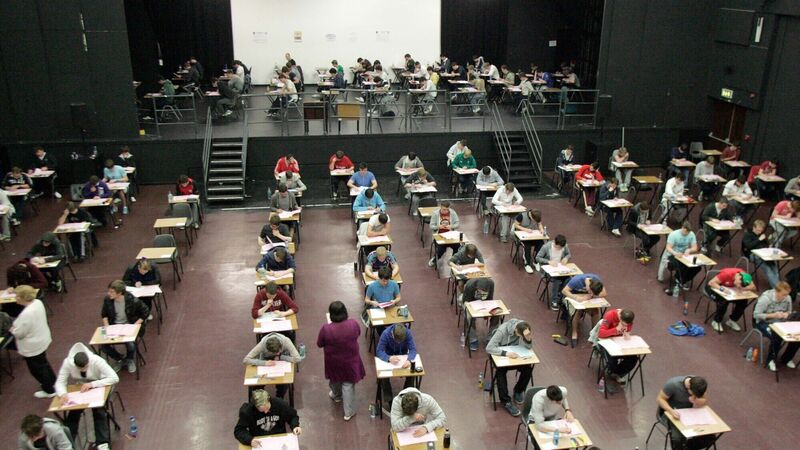Jess Casey: What will grade inflation mean for the Leaving Cert class of 2022?

Grade inflation, an increase in the average grades given to students, increased across the board in 2020 as ‘calculated grades’ were introduced for the first time. It continued to skyrocket across the board in 2021, following the ‘hybrid’ or ‘two-track’ Leaving Cert. Picture: Mark Stedman/RollingNews.ie
Remember during the first year of the pandemic, when there was a time when it seemed like we could rip up everything we disliked and start again?
We were to have reimagined cities and radically different structures and it seemed like the high stakes, high-stress Leaving Cert as we knew it would be one of the old bygones to fall by the wayside. Even the staunchest defender of the State exams acknowledges they have their faults, and everyone from the Taoiseach to the Children’s Ombudsman wants to see reform.
So with that in mind, many will be disappointed to see ‘traditional’ exams back on the horizon this year, albeit with more choices and more time.
Emergency changes to the exam format made over the last two years have been far from perfect but ultimately saw thousands of students progressing on to third-level during a time of great uncertainty. But two years of changes have had an impact, and many in the education sector are worried about further changes to the system this year. What does all this mean for this year’s students?
Grade inflation, an increase in the average grades given to students, increased across the board in 2020 as ‘calculated grades’ were introduced for the first time. It continued to skyrocket across the board in 2021, following the ‘hybrid’ or ‘two-track’ Leaving Cert.
So much so that the number of students who received top marks in 2021 is almost five times higher than the number of students in 2019, and more than double the number in 2020. In 2019, just seven students received eight H1s. Last year, this figure stood at 119.
With record-breaking grades, CAO entry point cut-offs subsequently jumped to record-breaking highs. In 2021, 22 courses also saw their cut-off points soar upwards of 600. This compares to one in 2019, the first time the limit was breached.
Last year, about 70 college courses had to use a lottery of random selection to determine entry for students. This was despite thousands of extra college places created in 2020 and 2021.
On Tuesday, Education Minister Norma Foley gave a commitment that the grade profile for the students of 2022 will be on a par with 2021. Exams will be marked according to a set marking scheme. An analysis of grades across all subjects and levels will then be carried out.
If, on average, grades are lower than last year, a “post-marking intervention” will be carried out to bring marks up. If the exam profile is higher than 2021, it will not be lowered.
With this guarantee in mind, many in the education sector are expecting at least the same level of grade inflation again this year as in 2021, if not higher, given the fact that students have a good chance of achieving even higher marks, with more choices and time in the exams.
Thousands of additional places were created to help ease the pressures on the system during 2020 and 2021, but sources say it is not sustainable to simply keep adding college places to meet the rate of grade inflation, without additional lecturers, college facilities, classrooms, or labs.
Last month, the Taoiseach acknowledged third-level institutions would not be able to provide the same number of extra college spaces this year. The Department of Further and Higher Education had not responded to enquiries put to it at the time of going to print.
Expanding student demographics is another factor. Roughly 78,160 students had applied to the CAO at the close of its normal application deadline on Tuesday.
Last year, the final figure stood at more than 84,000 applicants, a record high attributed to Brexit and the pandemic, among other factors.
In March, the CAO releases data on applications to different disciplines, which can be a useful predictor of what courses might see their points fluctuate.














